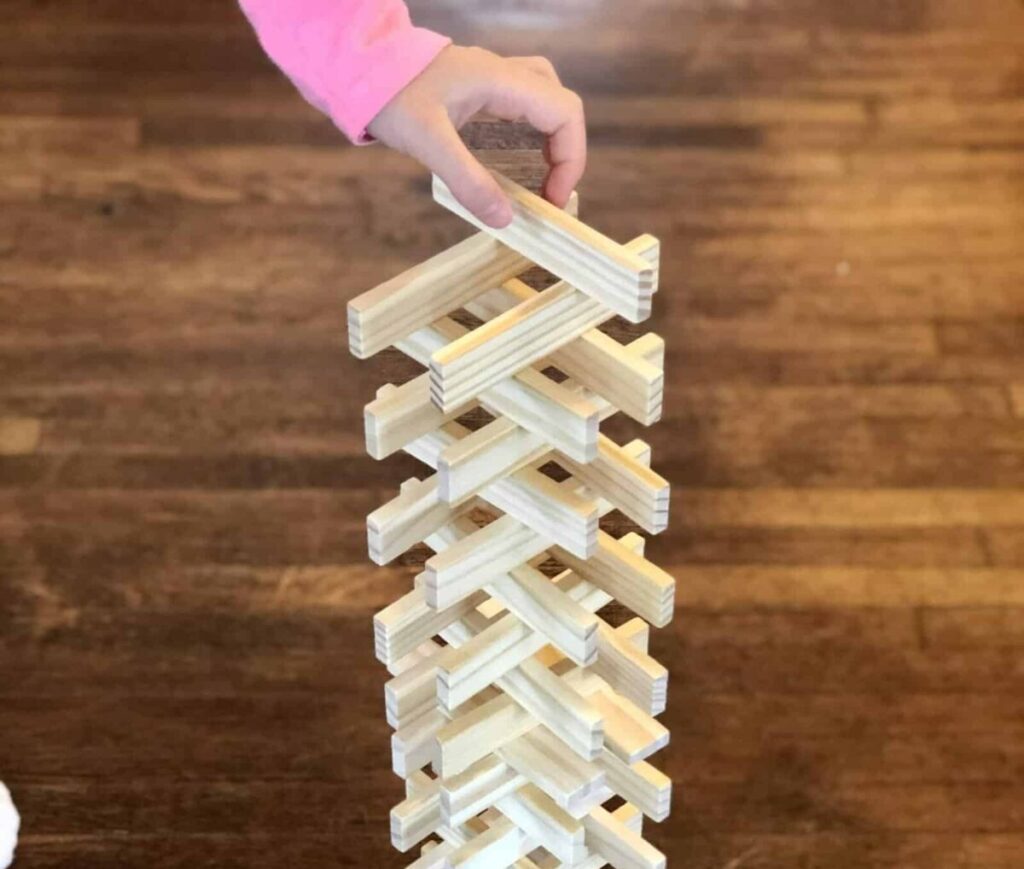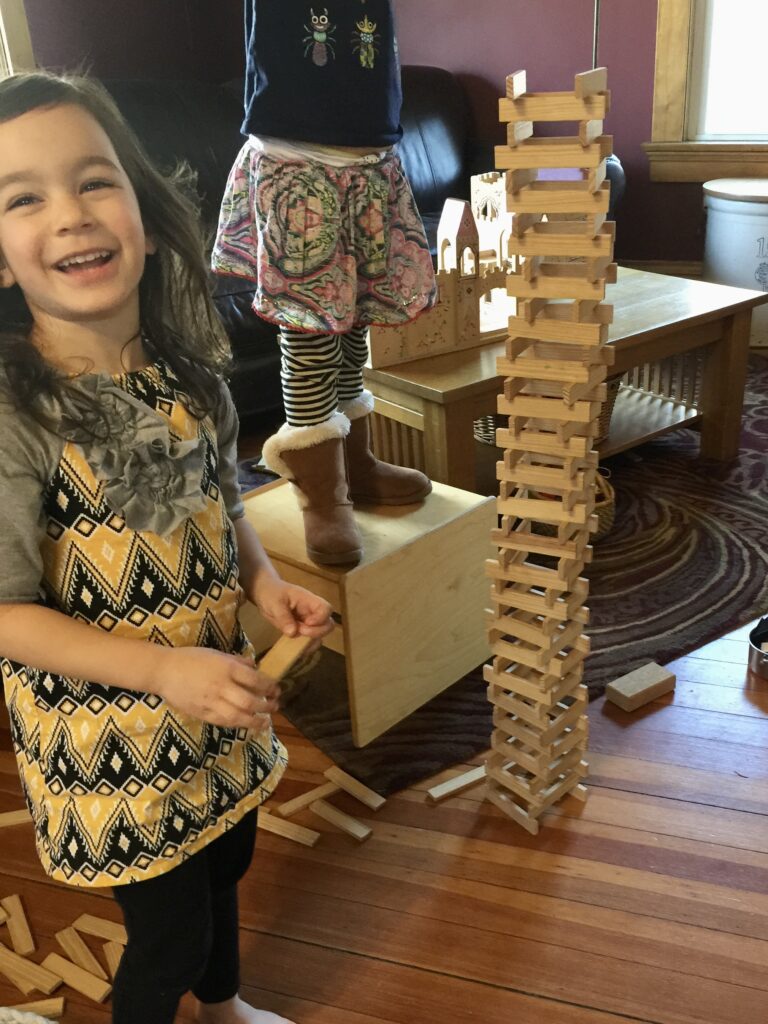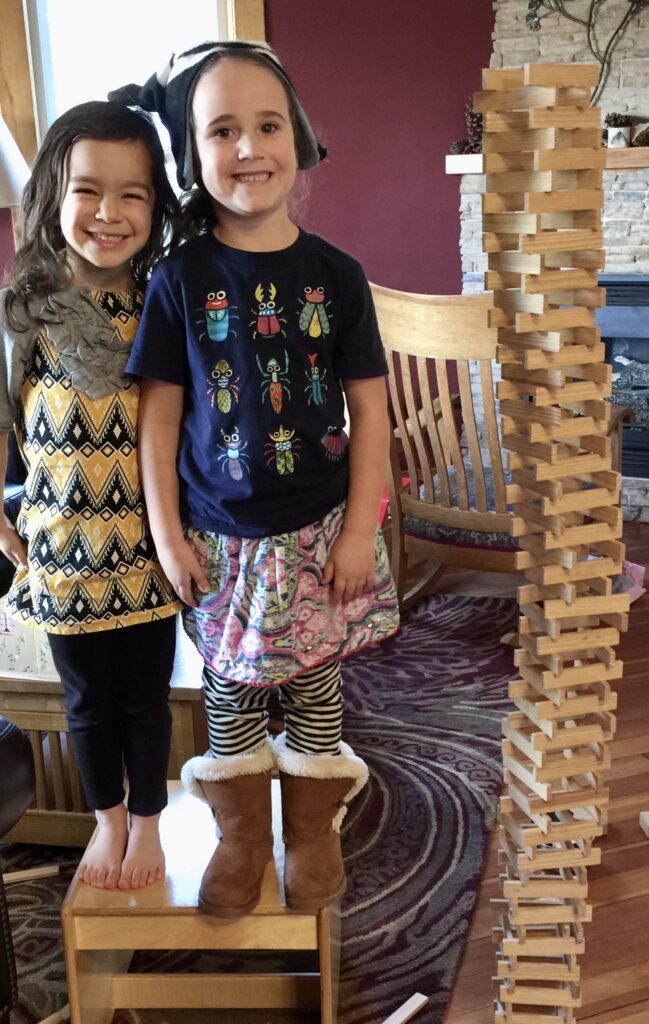Stacking Up Early Math and Engineering Skills
“We can’t reach the top to make it bigger!” says Rowan with a giggle.
“Can we stand on this table to make our tower taller?” Linnea pleads.
Four-year-olds Rowan and Linnea have taken over the front foyer of our early childhood center for some serious block play. This bustling area will soon be filled with parents picking up their children—and the heavy traffic will no doubt send this tower crashing to the ground.
But who among us can resist a great tower-building moment?

Early childhood is a unique developmental period when children are learning how to learn. They follow their own interests and have their own ways of looking at things. As Rowan and Linnea stack and fit the blocks together, they are stepping into the world of math and engineering.
“Go really slowly,” Linnea cautions as she watches Rowan add another block to the tower. The room grows still as we all hold our breath. These two math and engineering mavens have engaged in enough block play to know that it takes concentration and a gentle touch to place a block on a tower with precision and dexterity.
Years of block play have helped the girls develop visual-motor skills, eye-hand coordination and fine-motor skills. They are well aware of the concept of cause and effect—and they know that one false move will send this tower crashing to the floor.
This late-afternoon block party is also strengthening the girls’ spatial skills. Strong spatial skills are tied to math skills! Research shows that spatial reasoning skills are the best predictors of whether children will excel in STEM-related careers in adulthood. Spatial skills are especially important in STEM careers related to heating and plumbing systems, medical imaging, and engineering homes and buildings.

For all of these reasons, it’s important to give early learners like Rowan and Linnea ample time for extended block play.
“I think it’s going crooked,” says Linnea. “Can you move those two blocks over this way a little bit? But be careful!”
I watch as they collaborate and experiment with direction and observe the outcomes of their building efforts. They learn about mass, weight and proportionality as they plan and predict outcomes.
These girls are developing concepts in engineering as they design, build and test their solutions through their play. Making observations, asking questions and gathering information are all part of problem-solving.
Problem-solving is the work of engineers! You won’t see early learning standards for engineering, but we often see engineering concepts referred to within the science and mathematical standards and benchmarks.
More friends stop by to encourage this engineering duo and share in the communication and cooperation that is taking place as the tower grows taller. The children jointly decide where each block should go and then pass the blocks to Rowan, who has been tasked with the actual construction of the tower because she is the tallest child in the group.

Preschool-aged children need opportunities to be social and learn together with their friends. Important life skills such as taking turns, sharing and being patient are developing during these early social interactions.
As parents begin to arrive for pickup, I notice some two-year-olds in the actual block area creating their own version of stacked blocks. This is the mentoring that makes our teachers’ hearts burst with joy. This is what happens when children of different ages share an early learning environment. This is what happens when we educators resist the urge to say “no” when children want to build a block tower in a high-traffic area at an inconvenient time. If we let them lead their own play, children will create their own learning opportunities—often in the final moments of their preschool day!

Great lesson on spatial awareness and building. The students were planning and talking about their building.
staking blocks used to count and measure objects
Love these ideas!
I have had children make a lego tower to the ceiling.
They were able to use both floors of the house.
It was so exciting to all. Sad to take down.
always looking for new ideas for block play love this…
We have been learning the difference between standard and non-standard